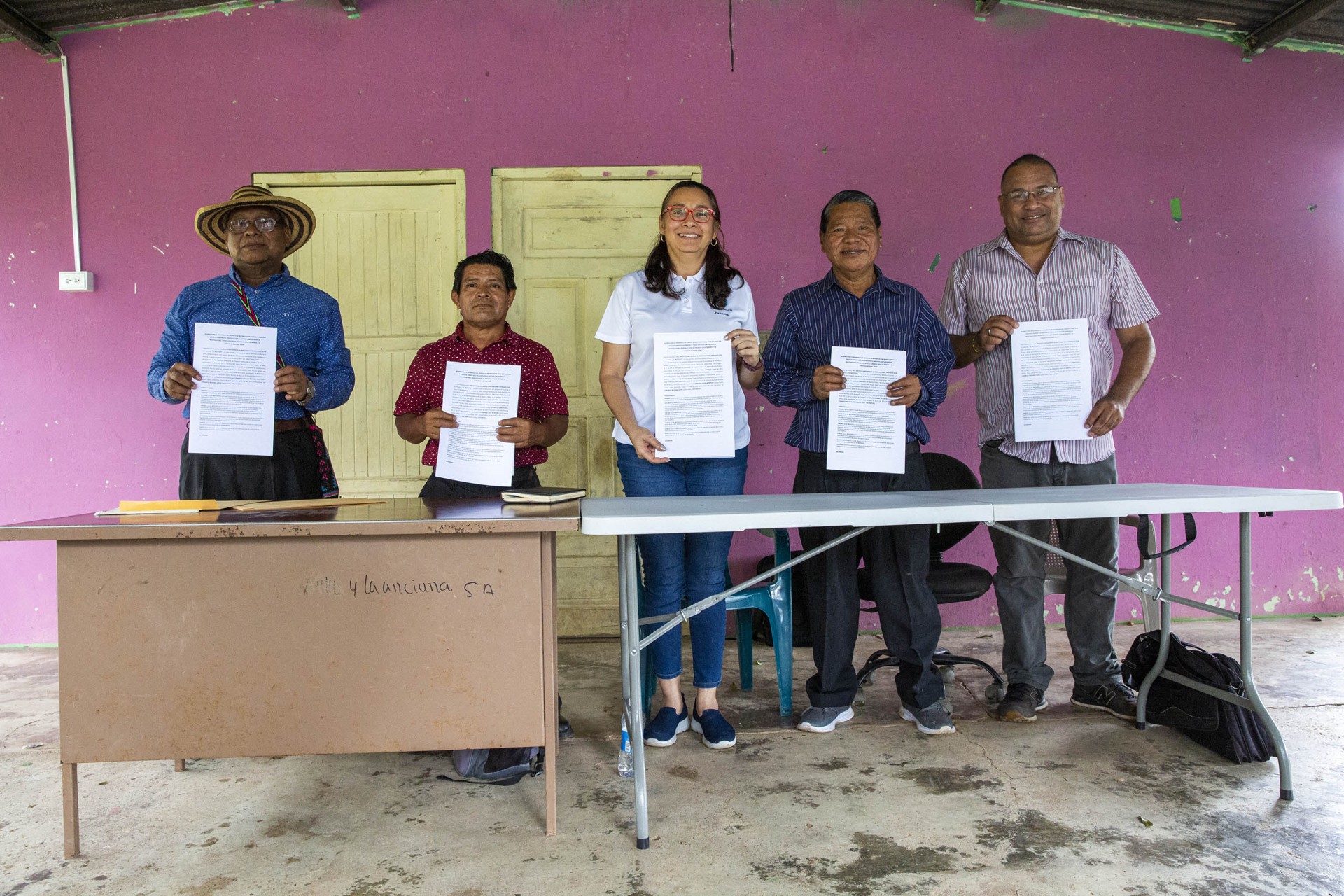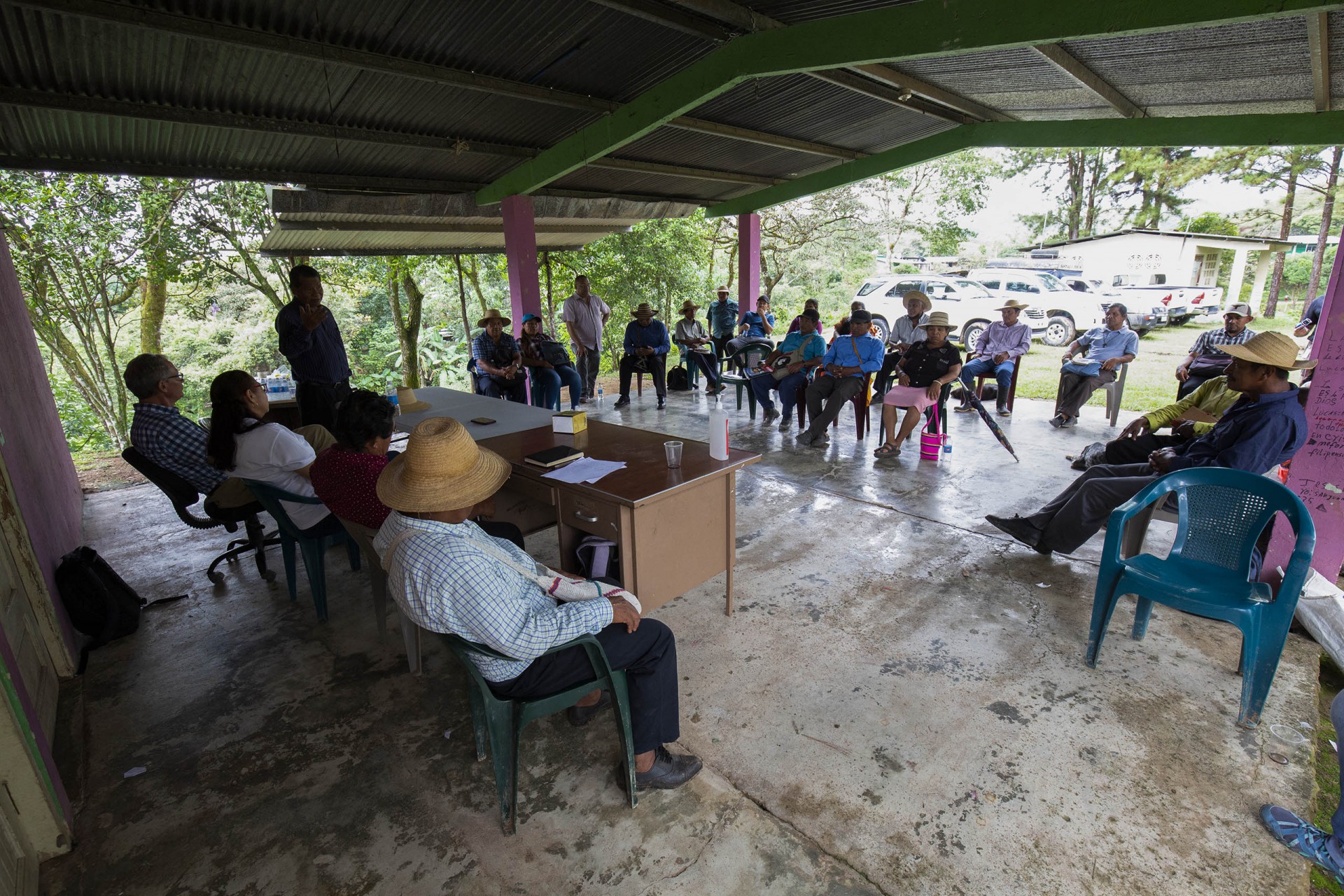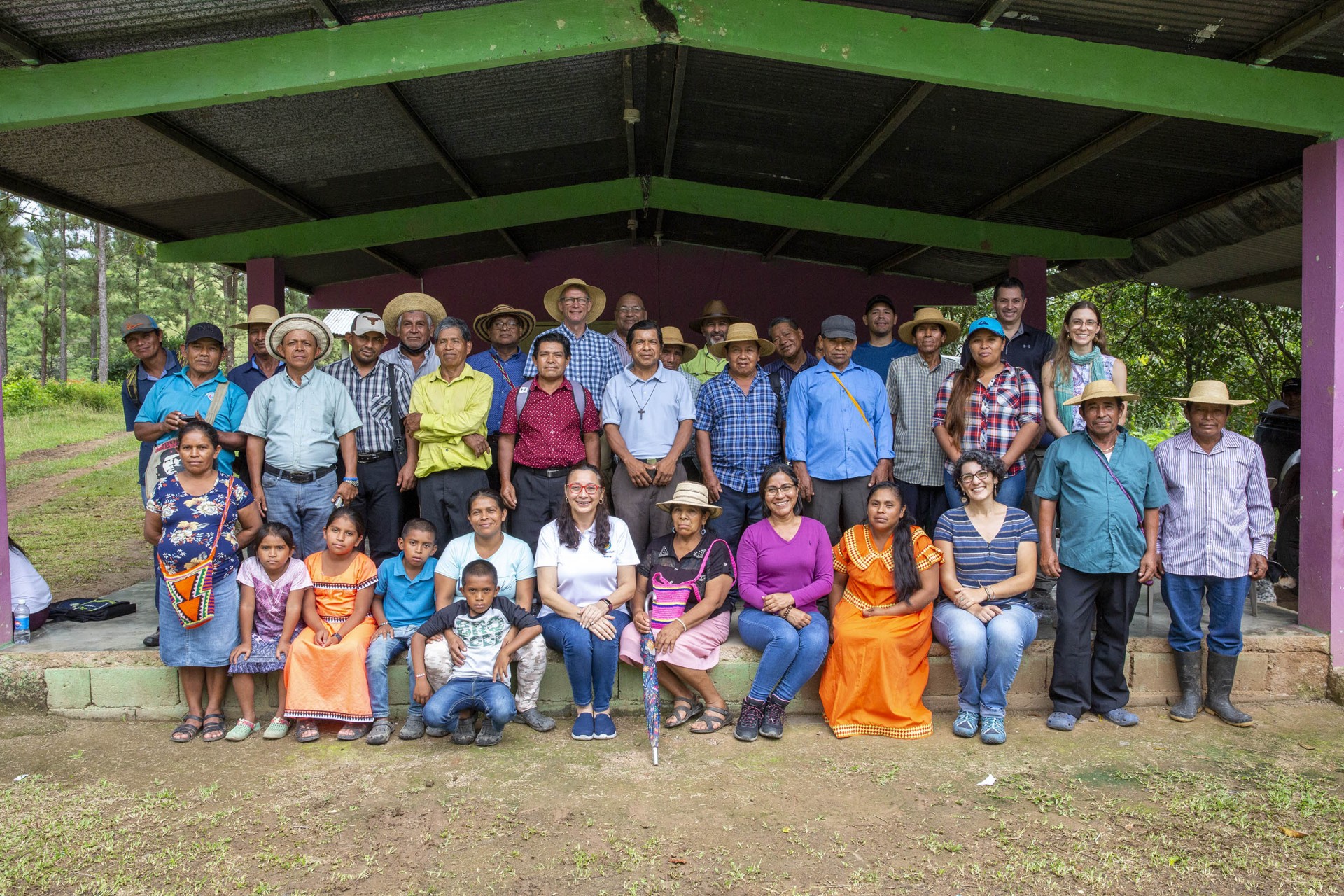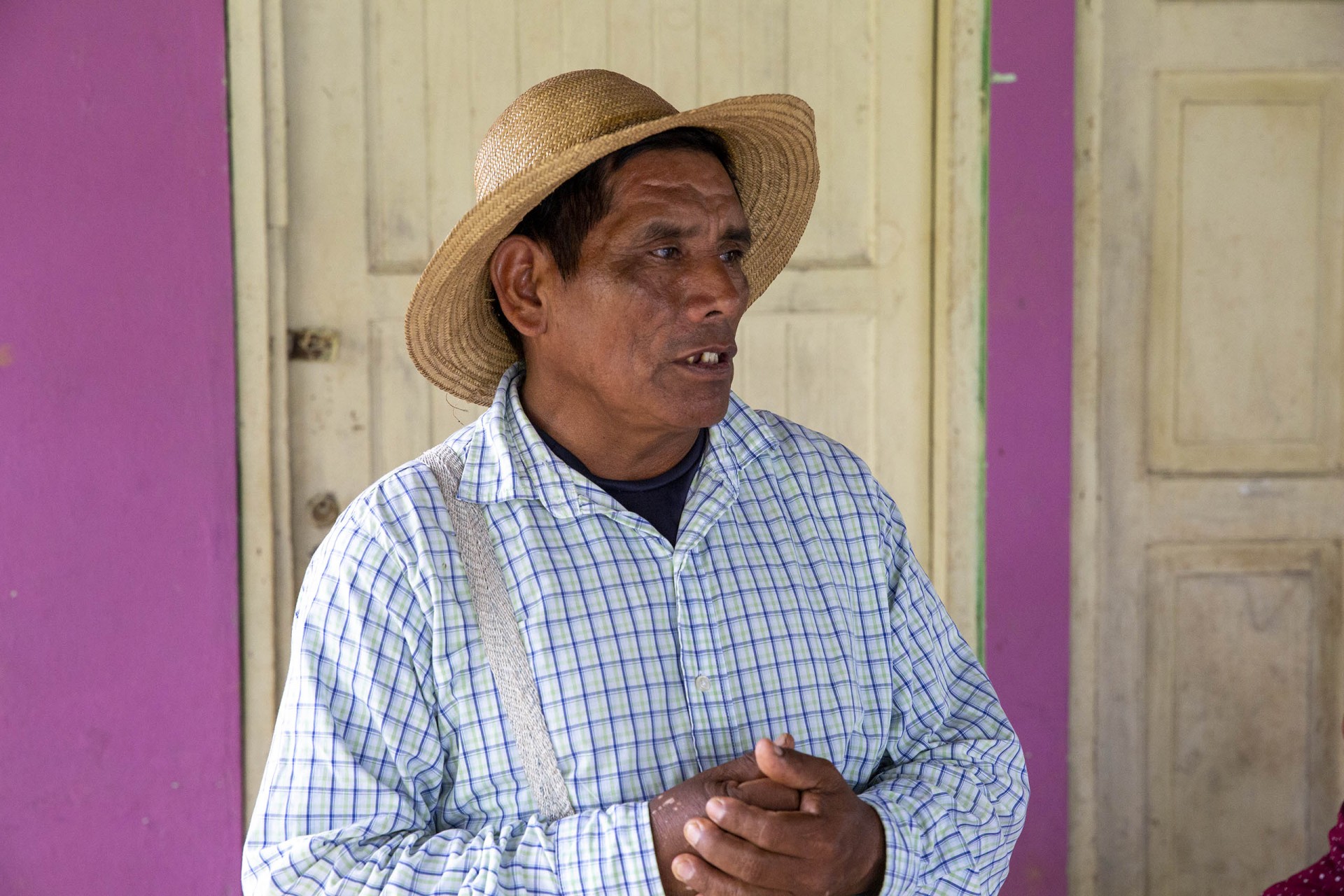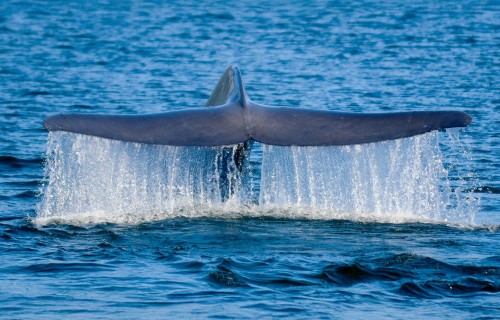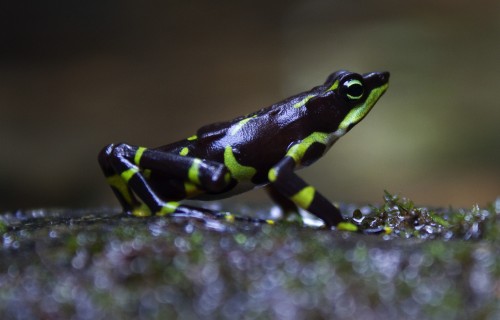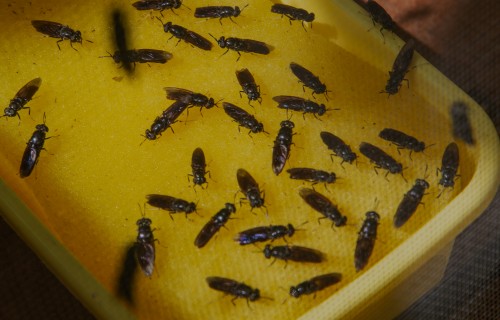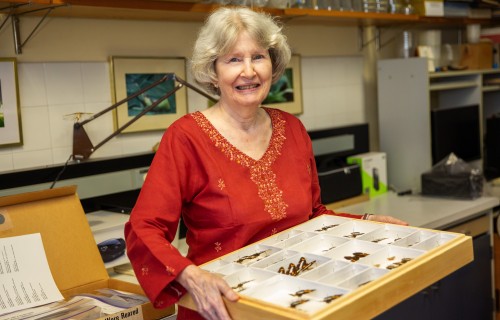Smithsonian science helps understand blue whale migratory and foraging patterns to inform conservation strategies
Indigenous
Reforestation
Seeking Win-Win solutions to combat climate change and improve livelihoods in Panama’s indigenous Ngäbe-Buglé Comarca
Can smart reforestation lessons from the Smithsonian’s Agua Salud Project in the Panama Canal watershed benefit Indigenous communities on deforested land in Western Panama?
On October 8, in El Peñón, Panama, Indigenous leaders from the Ngäbe-Buglé y Campesino Comarca, joined scientists from the Smithsonian Tropical Research Institute (STRI) to sign an agreement celebrating the Rohr Reforestation Initiative. The Centro de Estudios y Acción Social Panameño (CEASPA), a Panamanian environmental and social justice-oriented NGO, was also a key participant. All hope the initiative will inspire more ambitious tree-planting projects to convert the carbon dioxide (CO2) that causes global warming into wood and benefit indigenous and local peoples.
Leaders of the Ngäbe-Bugle y Campesino Comarca, and representatives of the Smithsonian Tropical Research Institute (STRI) sign an agreement establishing the Rohr Reforestation Initiative, an experiment to pay Indigenous residents to plant and care for trees in deforested areas of the Comarca. The Centro de Estudios y Acción Social Panameño (CEASPA) a Panamanian environmental and social justice-oriented NGO witnessed the signing of the agreement. From left to right: Pedro Nola Flores, Expresident of the Congreso General Tradicional Comarca Ngäbe-Buglé; Melitón Miranda, President of the Congreso Local Tradicional, Distrito Ñürüm; Oris Sanjur, STRI Deputy Director; Víctor Guerra, President of the Congreso Regional Tradicional, Región Kädri; Daniel Holness, President and legal representative of CEASPA.
“Now in its 14th year, the Agua Salud Project, a reforestation experiment set up in the Panama Canal area by STRI in partnership with the Panama Canal Authority and Panama’s Ministry of the Environment (MiAmbiente), taught us that successful reforestation depends on planting the right trees in the right place, at the right time, for the right reason: we call this Smart Reforestation,” said Jefferson Hall, Director of Agua Salud. “We’re taking the lessons we’ve learned to the Comarca, a largely deforested landscape where wage-based employment opportunities are in short supply, to create Smart Reforestation that’s also beneficial to people.”
Because land in the Comarca is communal and decisions are made collectively, the Agua Salud team spent over a year traveling back and forth to refine the proposal for the new initiative with local leaders and residents. In May, Jefferson Hall, Agua Salud Project Manager Adriana Tapia, and Pedro Nola Flores, past President of the Traditional Congress of the Comarca, hiked for 2.5 hours into the mountains for the annual District Congress convened by the District of Ñürüm under the auspices of the President of the Traditional Congress, Melitón Miranda.
On Saturday, October 8, in El Peñón, leaders and residents of the Ngäbe-Buglé y Campesino Comarca gathered with researchers from the Smithsonian Tropical Research Institute to sign an historic agreement to celebrate the Rohr Reforestation Initiative, a science-based experiment to pay residents to plant native trees and carbon for 20 years in mixtures which have been shown to be successful at other sites.
The 500 participants of the Congress noted that this was the first time in over 30 years that outsiders had travelled to their meeting to ask their permission to collaborate. Hall was “a little disappointed” that the project was not immediately approved but saw their requests for clarification in a very positive light. “We completely respect their decision-making process,” he said. He was happy to return to address questions at a second meeting of Congress leaders in August.
The Rohr Reforestation Initiative (STRI-RRI) will test different mixtures of tree species for reforestation and will compensate participants for their labor and the use of their land. Residents and scientists will plant 19 tree species in mixtures at 19 sites differing in size across a 400 km2 deforested landscape. During the first two years a total of 100 hectares will be planted. Researchers will collect data on local site condition, growth, and survival. Sites will be intensively managed for the first four years, and researchers hope to monitor the results for 20 years.
El Peñón, a rural town in the Ngäbe-Buglé y Campesino Comarca, and site of an historic agreement signed on Saturday, Oct. 8, to celebrate the Rohr Reforestation Initiative. The area is largely deforested and wage-based employment opportunities are in short supply, making this an ideal testing grounds for reforestation with mixtures of native trees, chosen based on research from the Agua Salud project, a landscape scale, Smithsonian reforestation experiment, now in its 14th year.
The tree species are predicted to grow well based on the best available data, but as STRI-RRI Postdoctoral Fellow, Katherine Sinacore acknowledges, “we’ve learned to expect the unexpected and we know that not all species will survive and thrive, particularly because the area experiences a prolonged dry season, and many sites are exposed to wicked dry season winds.”
Participants and researchers discussed planting and management methodologies: what does it take to build a fence? How much labor it will take to prepare and plant the land and what sort of follow-up and management will be required? STRI-RRI will provide all necessary materials and fair compensation for labor when participants do the work themselves and with their neighbors. The trees and forest belong to the participants. Neither STRI nor the Mark and Rachel Rohr Foundation maintain any claim to the trees. When the time comes to harvest them, the participants are free to use the wood as they see fit.
Group from the Smithsonian Tropical Research Institute (STRI) who made the Rohr Reforestation Initiative a reality: Adriana Tapia, Agua Salud project research manager; Katherine Sinacore, post-doctoral fellow; Johana Balbuena, Agua Salud research technician; Oris Sanjur, Deputy Director; Jefferson Hall, staff scientist and director of the Agua Salud project; Rodrigo Ramírez, Associate Director for Legal and External Affairs; Carlos Espinosa, Universidad Tecnológica de Panamá; Miguel Núñez, Agua Salud research technician.
Climate change purists might balk at the idea that the trees might be harvested in 30 years, but Hall is not concerned. “The world has ten years to get our act together to avoid the most catastrophic effects of climate change,” Hall says. “Forestry can be a part of the solution in the near-term but is also a stop gap as other technologies come online. If we haven’t solved the problem in 30 years, then we have failed and who are we to tell indigenous and local peoples what they can do with their trees. I can live with that, and I bet many others can as well.”
Cacique local, District of Ñürüm, Urbano Guerra. The Rohr Reforestation Initiative hopes to support local Indigenous people by paying them to plant trees which absorb carbon and mitigate global warming.
“The men and women of STRI know as much about reforestation in the tropics as anyone in the world. They know how much carbon a young forest can sequester in the Panama Canal Watershed, above and below ground but they don’t, and we can’t, know the exact rate of carbon sequestration in this completely new and incredibly challenging site,” said project sponsor, Mark Rohr. “I believe an important element in reforestation project success is the creation of project ownership by Indigenous people, for this we must provide a means for them to gain economically through this effort for years to come.” He added. To accomplishthis the initiative Rohr includes a “land lease” fee paid to the participants for the 20-year duration of the experiment. The Agua Salud project has shown that over the first 30 years of regrowth, trees in one hectare of land store an average of 6.9 metric tons of CO2 in aboveground tree biomass per year. Paying $130 per hectare per year would price the carbon at about $20 a ton.
Agua Salud Project technicians, Johana Balbuena, Miguel Núñez (pictured) and Mario Bailón have worked closely with the beneficiaries in the comarca since January, 2022. Their commitment and dedication has been key to the success of this project.
“Hall and colleagues have shown that when you include “ecosystem” carbon (carbon in the upper layer of the soil, roots, lianas, and woody debris), you get an additional 60% or a total of 11 metric tons of CO2 per hectare in the Panama Canal Watershed,” Rohr added. With this sort of expected buffer, Rohr is comfortable in leasing with the only requirement that he and STRI receive the rights to the carbon sequestered over the life of the initiative. He hopes the expected gains in carbon sequestrationestimatesbelow ground when proven can be rolled into future credits to expand the Reforestation Initiative in Panama and further benefit local landowners.
In the the Ngäbe-Buglé Comarca, trees will provide diverse benefits in areas where the land is covered in young scrub forest with little hope of returning to tall, stratified tropical forests as there is no longer any mature forest nearby for natural reseeding. “Enrichment planting” with tall tree species creates a favorable habitat to bring back birds and other wildlife that disperse seeds and enrich the ecosystem. Some participants hope to harvest high quality timber, others are more interested in wood for local use, and still others wish to protect the upper reaches of their watersheds.
Jefferson Hall, Director of the Agua Salud Project.
As Melitón Miranda said in public meetings, the Congress appreciates the extensive consultations by STRI and CEASPA with the Traditional Leadership and the people. He also pointed out that “it has been said that in many communities we now have more chain saws than trees. We rely on trees for so many things that it is important that we reforest for future generations.”
“Grand reforestation programs promoted by myriad international agreements are mere words when they’re not adequately funded,” said Hall, “The Rohr Reforestation Initiative will lead to a better understanding of how planting trees captures carbon, improves groundwater infiltration and other water-related ecosystem services, and increases biodiversity, and we hope it will improve people’s lives at the same time.”

